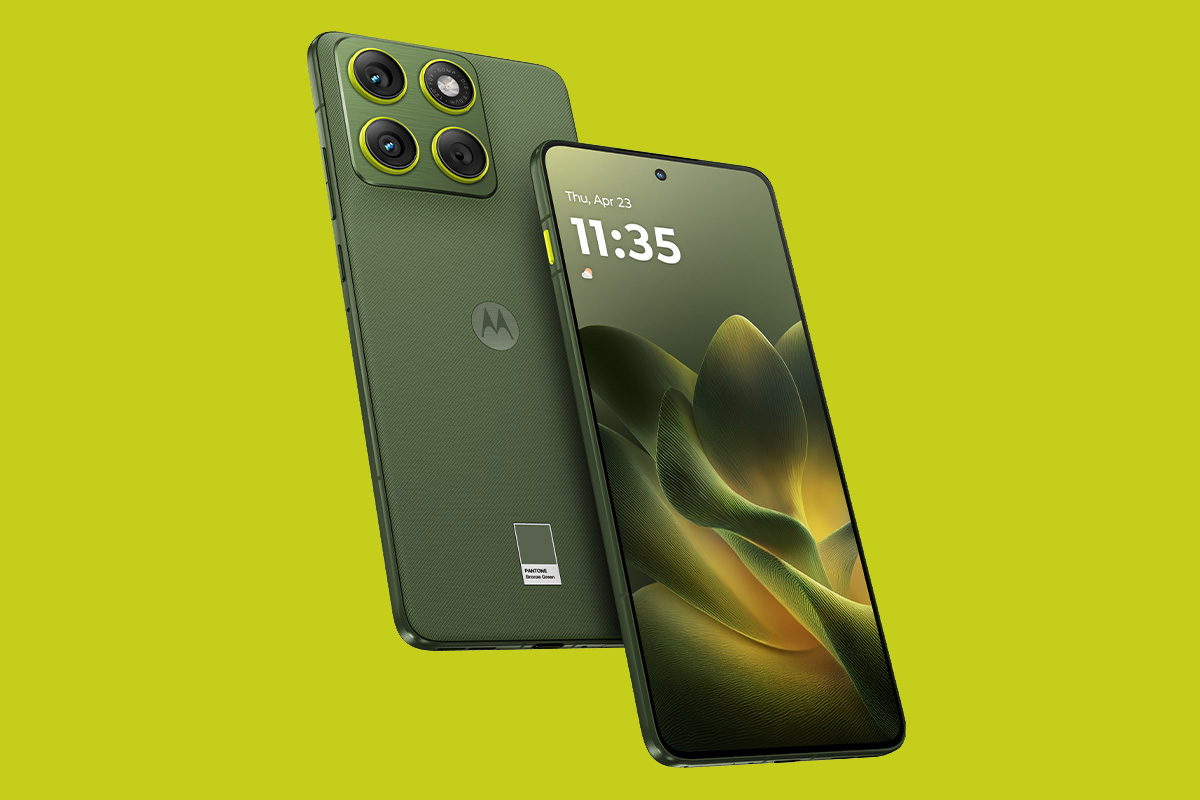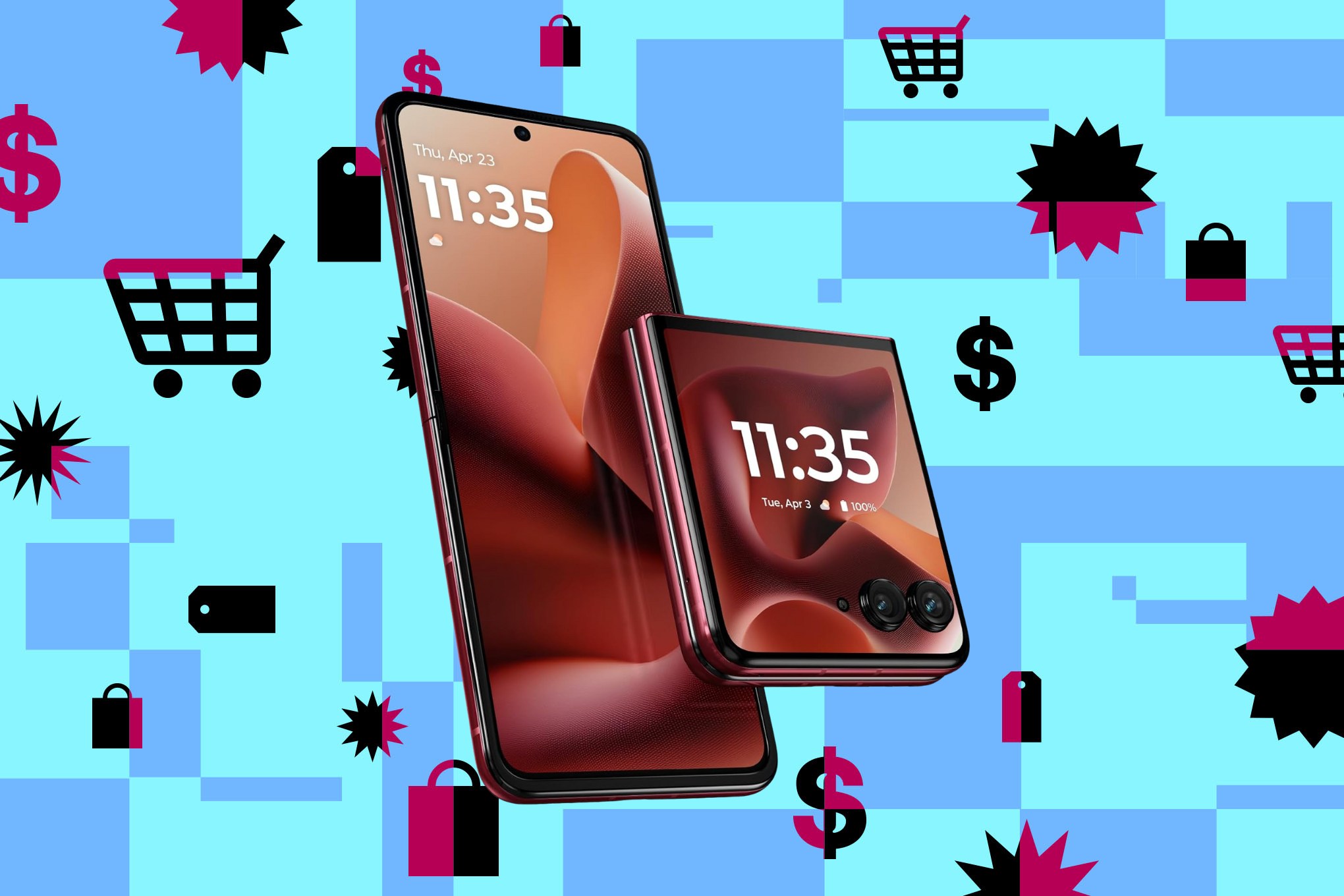
Any ebook reader will let you cram a Beauty and the Beast-sized library’s worth of books in your pocket, but so will your phone. An ebook reader offers a more book-like reading experience, with fewer distractions and less eye strain, and many include extra features, like adjustable frontlighting. Some really are pocketable. Others are waterproof or offer physical page-turning buttons, while a few even let you take notes.
I’ve been using ebook readers for nearly a decade, and I’ve gone hands-on with dozens, from the Kindle Paperwhite to lesser-known rivals like the PocketBook Era. Whether you want something your kid can throw against the wall or a waterproof, warm-glow Kindle that won’t ruin your spa ambiance, these are the best ebook readers for everyone.
The best Kindle
Kindle Paperwhite (2024)

Score: 8
| Pros | Cons |
|---|---|
|
|
Where to Buy:
Dimensions: 7 x 5 x .3 inches / Weight: 211 grams / Screen area and resolution: 7-inch screen, 300ppi resolution / Storage: 16GB / Other features: IPX8 waterproofing, Bluetooth audio support
If you mostly buy ebooks from Amazon, you’ll want a Kindle, and the 12th-gen Kindle Paperwhite is the best choice for most people. Starting at $159.99, it’s cheaper than the Kobo Libra Colour — my top non-Amazon ebook reader, which I’ll dive into later — while offering many of the same features. Those include a spacious 7-inch 300pi display with rich contrast levels and an adjustable warm white frontlight, which make for a clear and enjoyable reading experience. The latter also conveniently improves sleep by cutting down on blue light that interrupts melatonin production.
That warm white frontlighting is an advantage over the cool white of the $109.99 base-model Kindle, and unlike the base Kindle, the Paperwhite has IPX8 water resistance. The $199.99 Signature Edition Paperwhite also has an auto-adjusting frontlight and no lockscreen ads. It has wireless charging, which is a rare feature to find in an e-reader.

Amazon dominates the US ebook market, so Kindle owners have access to advantages owners of other ebook readers don’t. Much of Amazon’s hardware strategy depends on offering cut-rate discounts to pull you into its content ecosystem. If you have Prime and buy a lot of Kindle ebooks, the Paperwhite is the best choice because its ebooks and audiobooks are often on sale at Amazon, and Prime members get more free content through Prime Reading. Rivals like Kobo offer sales, too, but it’s hard for them to offer discounts as steep as Amazon.
There are downsides, though. The Paperwhite has lockscreen ads unless you pay $20 extra to get rid of them. It’s also too big to hold comfortably with one hand. Perhaps the Kindle Paperwhite’s biggest flaw, though — which it shares with all Kindles aside from Fire tablets — is that it’s not easy to read books purchased outside of Amazon’s store. Kindle ebook formats are proprietary and only work on Kindle. Unlike Kobo and other ebook readers, Kindles don’t support EPUB files, an open file format used by pretty much everyone except Amazon. So, for example, if you often shop from Kobo’s bookstore (or Barnes & Noble or Google Play Books or many other ebook stores), you can’t easily read those books on a Kindle without using a workaround. There are ways to convert and transfer file formats so you can read on the Kindle and vice versa, but it’ll take a couple of extra steps.
However, if you don’t buy your books elsewhere or you don’t mind shopping from Amazon, you’ll be more than happy with the Kindle Paperwhite.
Read our Kindle Paperwhite review.
The best non-Amazon ebook reader
Kobo Libra Colour (32GB, ad-free)

| Pros | Cons |
|---|---|
|
|
Where to Buy:
Dimensions: 5.69 x 6.34 x 0.33 inches / Weight: 199.5 grams / Screen area and resolution: 7-inch screen, 300ppi (black-and-white), 150ppi (color) / Storage: 32GB / Other features: Physical page-turning buttons, waterproofing, Kobo Stylus 2 support, Bluetooth audio support
The Kobo Libra Colour is an excellent alternative to Amazon’s ebook readers, especially for readers outside the US or anyone who doesn’t want to tap into Amazon’s ecosystem. Kobo’s latest slate offers many of the standout features found on the 12th-gen Kindle Paperwhite — including waterproofing, USB-C support, and a 300ppi display — along with a few perks that make it more helpful and enjoyable to use.
The color display is the most obvious. The Libra Colour uses E Ink’s latest Kaledio color screen technology, which provides soothing, pastel-like hues that still pop in direct sunlight. It’s not as sharp as reading in monochrome — the resolution drops to 150ppi when viewing content in color — but it’s a nice touch that makes viewing a wider range of content more pleasant. Book covers and comics, while still muted, have an added layer of depth, even if the colors are nowhere near as vivid as that of a traditional LED tablet or as vibrant as the Kindle Colorsoft Signature Edition.
However, unlike the Kindle Colorsoft Signature Edition, the Libra Colour works with a digital pen — the Kobo Stylus 2 (sold separately) — which lets you highlight text in various colors or take notes using Kobo’s integrated notebooks. You can also take advantage of some of the more advanced capabilities found in the Kobo Elipsa 2E, allowing you to solve math equations, convert handwriting into typed text, and insert diagrams. This lets the Libra Colour function as a mini notebook of sorts, though I wouldn’t use it as a primary note-taking device since the seven-inch display can feel cramped to write on.
The color display is only part of the appeal, though. The Libra Colour doesn’t have the lockscreen ads on the base Paperwhite — and packs physical page-turning buttons, which feel more intuitive to use than tapping either side of the display as you have to do on Amazon’s modern e-readers. The speedy e-reader also supports more file formats, including EPUB files, and makes it much easier to borrow books from the Overdrive library system. Until recently, Kobo offered support for the bookmarking app Pocket, which was another big selling point as it let you read saved articles offline. While the app is no longer available, Kobo recently replaced Pocket with Instapaper, which you can download in a free update.

However, at $229.99, the Libra Colour costs $70 more than the entry-level Paperwhite — and that’s without Kobo’s $69.99 stylus, which is required for performing certain tasks. That gap widens further when the Paperwhite is on sale, which happens more often than the Libra Colour. The Kobo can’t easily tap into Amazon’s vast library of ebooks, which can be frustrating if you’ve amassed a collection of Kindle titles over the years. It can be done, but you have to convert file formats using third-party apps, which is tricky and can take time.
But if those things don’t matter or apply to you, the Kobo Libra Colour will give you the best digital reading experience of all the e-readers on our list. It’s my personal favorite.
Read our Kobo Libra Colour review.
The best cheap ebook reader
Kindle (2024)

| Pros | Cons |
|---|---|
|
|
Where to Buy:
Dimensions: 6.2 x 4.3 x 0.32 inches / Weight: 158 grams / Screen area and resolution: 6-inch screen, 300ppi resolution / Storage: 16GB / Other features: USB-C support, Bluetooth audio support
The base-model Kindle ($109.99 with ads) is the best cheap ebook reader. Its 300ppi resolution makes text clearer and easier to read than the lower-resolution screens on other ebook readers in its price range. Plus, it has USB-C for relatively fast charging.
Reading on its six-inch screen feels a little more cramped than it does on the larger displays of the Kindle Paperwhite and Kobo Libra Colour. However, the flip side is that its small size makes it pocketable, light, and easy for small hands to hold. Combined with its relatively affordable price, the Kindle is also the best ebook reader for kids — especially the Amazon Kindle Kids Edition which costs $20 more. The kid-friendly version shares the same specs but is ad-free with parental controls, a two-year extended replacement guarantee, and a case. It also comes with six months of Amazon Kids Plus, which grants kids access to thousands of children’s books and audiobooks for free. After that, though, you’ll have to $79 per year (or $48 with Amazon Prime).

The base Kindle doesn’t have extra conveniences like the waterproofing you’ll find in the entry-level Kobo Clara BW and Paperwhite. You also don’t get the physical page-turning buttons found on Barnes & Noble’s entry-level e-reader, the Nook GlowLight 4e (though the Kindle is a lot snappier than the Nook). And because it’s an Amazon ebook reader, you’re also locked into the Amazon ecosystem and have to pay extra to remove ads. But if you can do without that, the Kindle delivers the essentials for under $110.
The best ebook reader for taking notes
Kobo Elipsa 2E

| Pros | Cons |
|---|---|
|
|
Where to Buy:
Dimensions: 7.6 x 8.94 x 0.30 inches / Weight: 390 grams / Screen area and resolution: 10.3-inches, 227ppi resolution / Storage: 32GB / Other features: Handwriting to text conversion, magnetic stylus, Bluetooth audio support
Of all the large ebook readers I tested, the Kobo Elipsa 2E stood out the most because it’s a good e-reader with solid note-taking abilities. You can write directly on pages just as on a physical book. The Kindle Scribe lets you annotate book pages as well, but it’s complicated involving resizable text boxes that mess up the page formatting and prevent you from doing basic things like circling words. In contrast, taking notes on the Elipsa 2E feels far more intuitive and natural.
The Elipsa 2E offers other helpful note-taking tools and capabilities. Like the Kobo Libra Colour, it’s capable, for example, of solving math equations for you. You can also insert diagrams and drawings, and it’ll automatically snap them into something that looks cleaner and nicer. You can also sync your notes with Dropbox or view them online and convert handwriting to typed text. The Kindle Scribe offers the latter capability, too, but again, Kobo does it faster and better within the original notebook document as opposed to on a separate page. The only thing missing from the Elipsa 2E is the Scribe’s note-summarization feature, but that’s a trade-off I am okay with given how much easier it is to take notes.
Finally, the Kobo Elipsa 2E comes with twice the storage (32GB) for the same price as the base Kindle Scribe. You can step up to the 32GB Kindle Scribe for $20 more or upgrade to 64GB for $40 extra. Yet given the Scribe’s limitations, I still recommend saving the money and buying the Kobo Elipsa 2E instead.

Note-taking capabilities aside, the Kobo Elipsa 2E is also a good e-reader with the same strengths and weaknesses as other Kobo devices. There’s support for a wide range of file formats, but you can’t easily read Kindle books without converting them first. Its 227ppi display is also slightly less sharp than the 300ppi screen found on the Kindle Scribe and the Kobo Libra Colour. However, the 10.3-inch screen balances things out a bit and makes text easier to read, so it’s not a noticeable drawback. Plus, the Elipsa 2E comes with an adjustable warm light for nighttime reading. That’s a feature rival e-readers with more advanced note-taking capabilities — including the $409.99 Onyx Boox Go 10.3, which lets you insert links to notes — lacks.
Other ebook readers that didn’t make the cut
There are some other ebook readers my colleagues and I have tested that I didn’t feature above but are still worth highlighting. Here are the most notable:
Kindle Colorsoft Signature Edition
The Kindle Colorsoft Signature Edition is the first Kindle to feature E Ink’s color screen technology and it stands out from other color e-paper devices with customizations. It offers improved contrast, more vibrant colors, and faster screen refreshes. With a $279.99 price tag, it’s the most expensive Kindle model currently available that doesn’t support a stylus for note-taking, and it includes premium features like wireless charging that are convenient but not really necessary for a device with months of battery life. If you want a color screen and want to stick with Amazon, the Colorsoft Signature is your best option. – Andrew Liszewski, Senior Reporter
Kindle Colorsoft
Amazon recently introduced a more affordable alternative to the $279.99 Kindle Colorsoft Signature Edition above called the Kindle Colorsoft. It’s $30 cheaper and delivers a nearly identical reading experience. As expected, Amazon excluded some features to hit the lower price point. Let’s run through them. There’s no wireless charging, which I can live without. Storage is halved to 16GB, which is enough for me as I primarily read ebooks. But if you’re buying a color e-reader, chances are high that you’ll want excess storage space for graphic novels, and 16GB may not cut it.
The biggest drawback for me, as a bedtime bookworm, is the lack of an auto-adjusting front light that can make nighttime reading much easier (however, its brightness and color temperature can be manually adjusted). At this price, I expect it, especially since Kobo’s $159.99 Clara Color includes one. And, given that the Colorsoft Signature Edition costs just $30 more, complete with a front light that adjusts when the room gets dim, 32GB of storage, and wireless charging, I’d opt for that instead if you’re in Amazon’s ecosystem. Unless the standard Colorsoft goes on sale for less, it’s not a great value at its regular price.
Kobo Clara Colour
If you’re looking for a non-Amazon alternative that’s more affordable than the Kobo Libra Colour, the Kobo Clara Colour — the successor to the Kobo Clara 2E — is worth a look. At $159.99, the ad-free e-reader costs more than the Kobo Clara 2E, but I think it’s worth the extra $10. It continues to offer the same six-inch display and IPX8 waterproof design, but the e-reader now offers color. It’s also noticeably faster — something I was happy to see, considering the occasional lag on the Clara 2E sometimes got on my nerves. You don’t get the Clara Colour’s physical buttons or stylus support, but that’s a fair tradeoff at this price point. The company recently announced a white version with a slightly larger 1,900mAh battery compared to the black model’s 1,500mAh (notably, without a price increase), which Kobo says can last over a month on a single charge.
Nook Glowlight 4 Plus
In 2023, Barnes and Noble released the Nook Glowlight 4 Plus. If you own a lot of digital books from Barnes and Noble, this could be a good Kindle alternative. Otherwise, I’d still recommend the Kobo Libra Colour to everybody else. The $199.99 Nook Glowlight 4 Plus is a good e-reader with a lot to offer, including a lovely 300ppi screen, waterproofing, physical page-turning buttons, and even a headphone jack. However, it’s just not as snappy, which makes setting it up, buying books from the device itself, and navigating the interface a slow ordeal. It didn’t help that the screen sometimes froze, too, which meant I had to restart the device while in the middle of a book.
Boox Palma 2
Despite all the advantages of E Ink display technology, your smartphone is probably still a more convenient device for reading given how pocket-friendly it is. The Boox Palma 2 is a smartphone-sized E Ink device that’s just as easy to slip into a pocket, but with more capabilities than an e-reader. Its 6.3-inch E Ink display is great for reading books, but the $279.99 Palma 2 also runs Android 13 so you can install productivity apps like email and messaging — assuming you’ve got access to Wi-Fi, of course, because the compact e-reader lacks cellular connectivity. If you already have the original Palma, the sequel isn’t worth the upgrade. But if you’re looking for a smaller alternative to Kindles and Kobos, the Palma 2 could be worth the splurge. – Andrew Liszewski, Senior Reporter
Boox Go 10.3
The $409.99 Onyx Boox Go 10.3 is another ad-free ebook reader you can use to take notes. It’s excellent as a note-taking device, and it offers an impressively wide range of writing tools and more prebuilt notebook templates than Kobo’s Elipsa 2E. Jotting down notes using the built-in notebook felt more akin to writing on paper as well, and its slim design makes the device feel more like a traditional notebook. Like all Boox devices, it also provides quick access to the Google Play Store, so you can download multiple reading apps — including both Kindle and Kobo apps. The slate’s crisp 300ppi display is sharper than that of the Kobo Elipsa 2E, too, which is a plus.
However, in comparison to the easy-to-use Elipsa 2E, the Go 10.3 lacks a front light and comes with a steeper learning curve. Notes you take on a Kindle or Kobo device won’t transfer over (and vice versa), and you can’t annotate books in either app using the Boox. I also felt like access to Google Play can be a double-edged sword as it grants easy access to distracting apps, including games, streaming services, and TikTok. It’s too slow to use the latter, but it’s fast and comfortable enough that I found myself playing around with the Word Search app far too often. For me personally, I need my e-reader to be devoid of such distractions — it’s one of the biggest things that distinguishes it from a tablet, after all. But if you’ve got more self-control than I do, the Go 10.3 could be worth a look.
Boox Go Color 7 Gen II
In April, Boox introduced the Go Color 7 Gen II, which retails for $279.99. This water-resistant e-reader offers a 300ppi display that drops to 150ppi when displaying color content, much like its Kobo and Kindle rivals. However, similar to the Kobo Libra Colour, this ad-free model offers physical-page turning buttons and supports note-taking. A stylus isn’t included, so you’ll need to spend an extra $45.99 for Boox’s pressure-sensitive InkSense pen if you want to take notes. And, like other Boox devices, it runs on Android, giving you access to a wide range of apps and online bookstores through the Google Play Store.
While I appreciated not having to sideload my Kindle and Kobo library, along with greater flexibility to fine-tune color settings, I ultimately prefer the Kobo Libra Colour. In my testing, the Go Color 7 Gen II felt frustratingly sluggish by comparison to the Libra Colour, which is disappointing given the Boox costs $50 more. Responsiveness is a core part of the reading experience for me, so I’d only recommend Boox’s model to readers who value having Android app flexibility over performance.
What’s coming next
- Amazon recently announced three new versions of its note-taking Kindle Scribe: the $629.99 Kindle Scribe Colorsoft, which features a color screen; a $499.99 monochrome model with a front light; and an entry-level version without one for $429.99. All three offer a thinner design and a larger 11-inch display, along with a new AI-powered search tool that makes it easy to quickly summarize documents. Amazon has also updated the homescreen with a Quick Notes section and redesigned the stylus so it’s bigger and rounder, which should lend itself to a more intuitive writing experience. Read our hands-on impressions.
- The new Boox P6 Pro is the company’s latest smartphone-sized e-reader. It comes with a color E ink screen and goes for around $463 in China, with Boox selling a cheaper black-and-white version for roughly $393. Both configurations come with LTE connectivity and stylus support, run a version of Android 13 out of the box, and feature a 16-megapixel camera for scanning documents. They also offer 128GB of storage that can be expanded up to 2TB using the SIM card tray, which conveniently doubles as a microSD slot. The P6 Pro recently launched in China, but Boox hasn’t shared details regarding a US launch date. Read our initial IFA impressions.
Update, October 14th: Adjusted pricing / availability and added new details regarding Amazon’s latest Kindle Scribe models and the Boox P6 Pro. Andrew Liszewski also contributed to this post.
🛸 Recommended Intelligence Resource
As UAP researchers and tech enthusiasts, we’re always seeking tools and resources to enhance our investigations and stay ahead of emerging technologies. Check out this resource that fellow researchers have found valuable.














